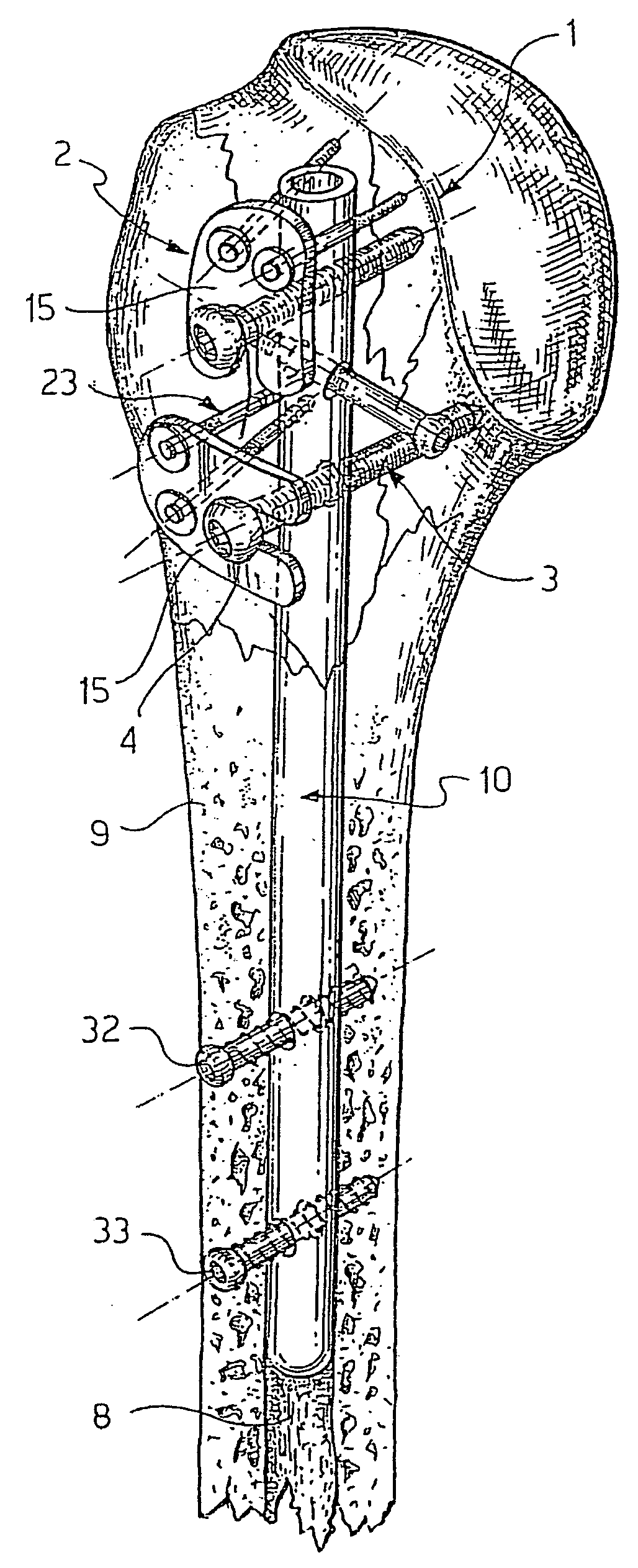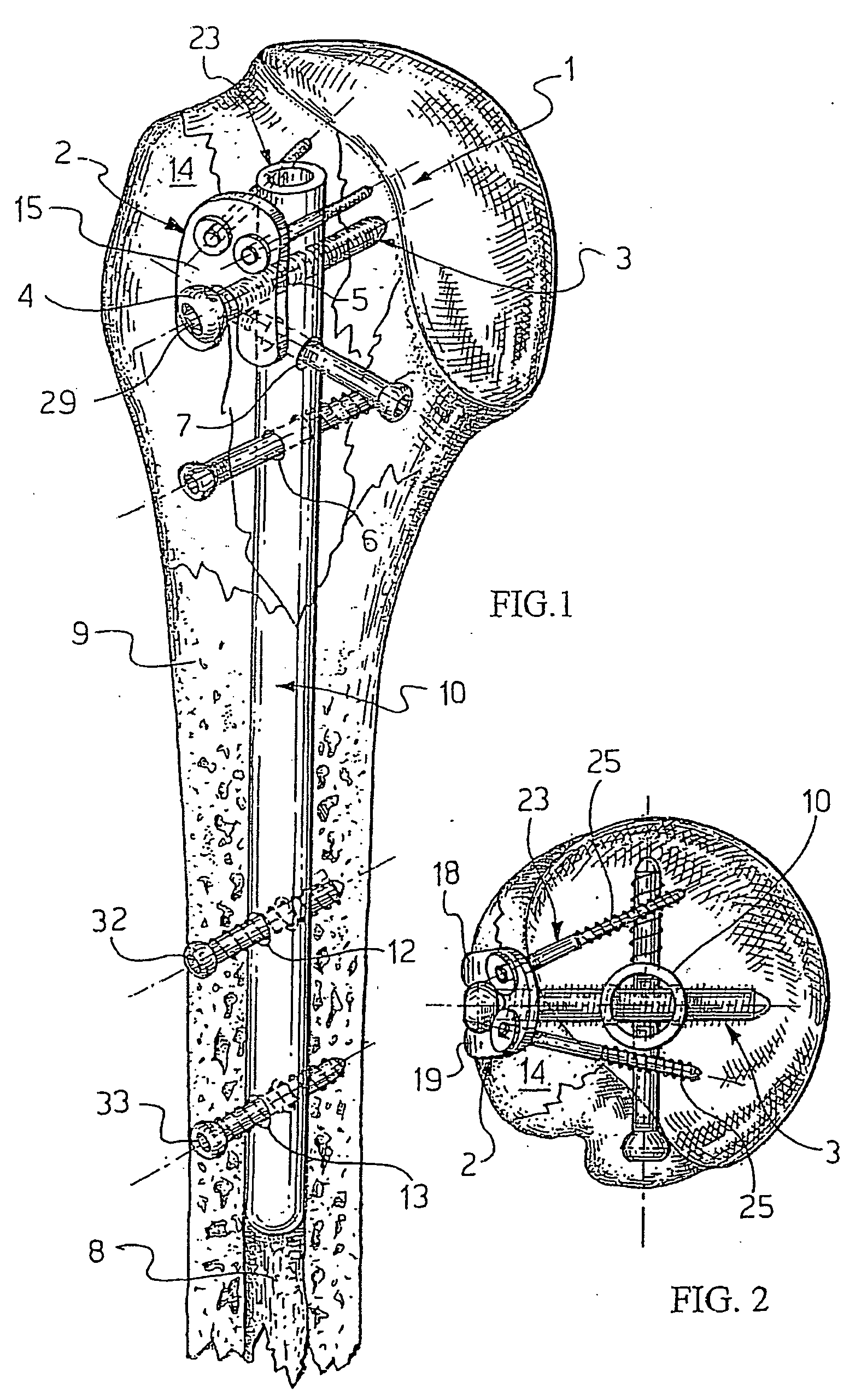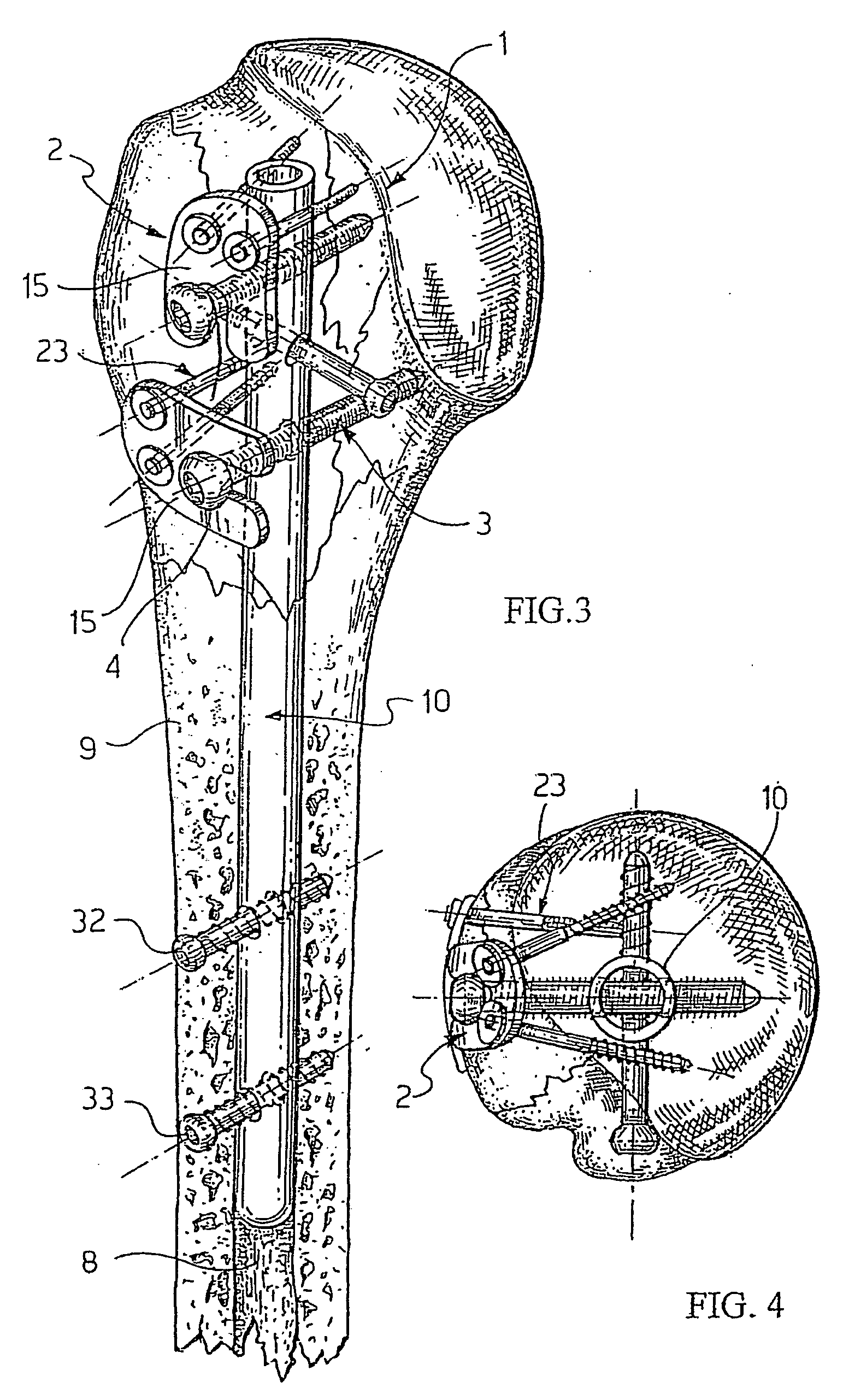System for fixation of bone fractures
- Summary
- Abstract
- Description
- Claims
- Application Information
AI Technical Summary
Benefits of technology
Problems solved by technology
Method used
Image
Examples
Example
[0051] According to a first embodiment of the present invention the fixation system 1 includes the humeral nail 10, proximal locking screws 3 and at least one fastening device 2.
[0052] The humeral nail 10 includes a group of proximal transversal holes for corresponding locking screws 3. In this embodiment at least three transversal holes 5, 6, 7 are provided in the proximal portion of the humeral nail 10.
[0053] More specifically, since the humeral nail 10 is cannulated, each of the transversal holes 5, 6, 7 comprises a couple of holes that are realised in opposite walls of the nail and that may be axially aligned. For disclosure purposes we will consider these opposite holes as a single transversal hole.
[0054] Each of the transverse holes may be oriented at a selected angle with respect to the nail longitudinal axis; however, at least two holes 5, 6 of said group of proximal holes lie on a same plane while a third screw lies in a sagittal plane.
[0055] Advantageously, the locking...
PUM
 Login to View More
Login to View More Abstract
Description
Claims
Application Information
 Login to View More
Login to View More - R&D
- Intellectual Property
- Life Sciences
- Materials
- Tech Scout
- Unparalleled Data Quality
- Higher Quality Content
- 60% Fewer Hallucinations
Browse by: Latest US Patents, China's latest patents, Technical Efficacy Thesaurus, Application Domain, Technology Topic, Popular Technical Reports.
© 2025 PatSnap. All rights reserved.Legal|Privacy policy|Modern Slavery Act Transparency Statement|Sitemap|About US| Contact US: help@patsnap.com



